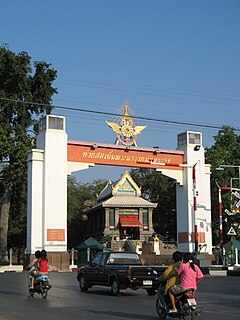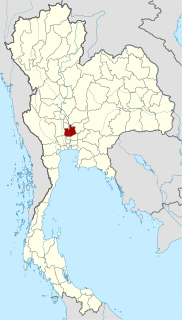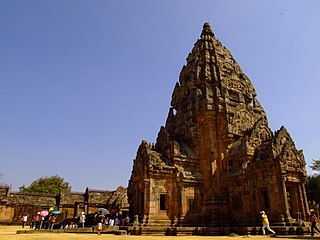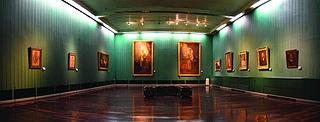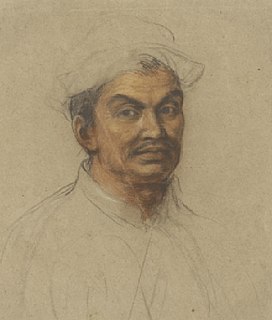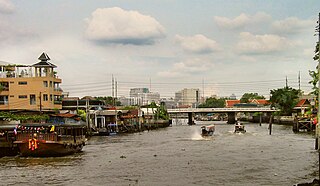This article needs additional citations for verification .(March 2016) (Learn how and when to remove this template message) |
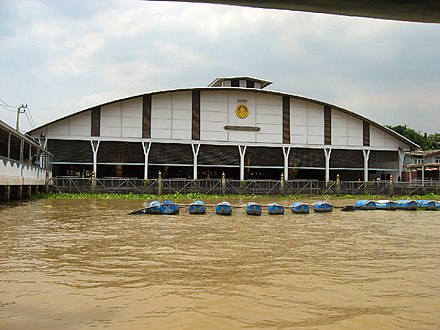


The National Museum of Royal Barges is a museum in Bangkok, Thailand. It is on the northern rim of Bangkok Noi canal in the Bangkok Noi District.

A museum is an institution that cares for (conserves) a collection of artifacts and other objects of artistic, cultural, historical, or scientific importance. Many public museums make these items available for public viewing through exhibits that may be permanent or temporary. The largest museums are located in major cities throughout the world, while thousands of local museums exist in smaller cities, towns and rural areas. Museums have varying aims, ranging from serving researchers and specialists to serving the general public. The goal of serving researchers is increasingly shifting to serving the general public.
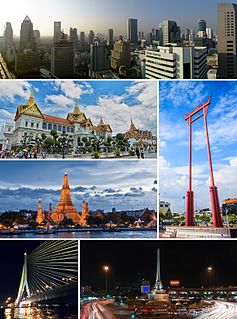
Bangkok is the capital and most populous city of Thailand. It is known in Thai as Krung Thep Maha Nakhon or simply Krung Thep. The city occupies 1,568.7 square kilometres (605.7 sq mi) in the Chao Phraya River delta in central Thailand, and has a population of over eight million, or 12.6 percent of the country's population. Over fourteen million people lived within the surrounding Bangkok Metropolitan Region at the 2010 census, making Bangkok the nation's primate city, significantly dwarfing Thailand's other urban centres in terms of importance.

Thailand, officially the Kingdom of Thailand and formerly known as Siam, is a country at the centre of the Southeast Asian Indochinese peninsula composed of 76 provinces. At 513,120 km2 (198,120 sq mi) and over 68 million people, Thailand is the world's 50th largest country by total area and the 21st-most-populous country. The capital and largest city is Bangkok, a special administrative area. Thailand is bordered to the north by Myanmar and Laos, to the east by Laos and Cambodia, to the south by the Gulf of Thailand and Malaysia, and to the west by the Andaman Sea and the southern extremity of Myanmar. Its maritime boundaries include Vietnam in the Gulf of Thailand to the southeast, and Indonesia and India on the Andaman Sea to the southwest. Although nominally a constitutional monarchy and parliamentary democracy, the most recent coup in 2014 established a de facto military dictatorship.
Contents
Royal barges from the Royal Barge Procession are kept at the museum.
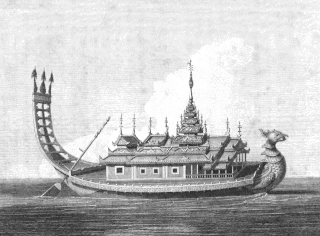
A royal barge is a ceremonial barge that is used by a monarch for processions and transport on a body of water.
Thailand's Royal Barge Procession is a ceremony of both religious and royal significance which has taken place for nearly 700 years. The royal barges are a blend of craftsmanship and traditional Thai art. The Royal Barge Procession takes place rarely, marking only the most significant cultural and religious events. During the long reign of King Bhumibol Adulyadej, spanning over 70 years, the procession has only occurred 16 times.
The museum was formerly a dry dock for barges and warships under the care of the Royal Household and the Royal Thai Navy. The dock and barges sustained severe bombing damage during World War II, but in 1949 they were restored by the Fine Arts Department as part of the Thai cultural heritage. Repairs were completed and the dock became the National Museum of Royal Barges in 1972.

A dry dock is a narrow basin or vessel that can be flooded to allow a load to be floated in, then drained to allow that load to come to rest on a dry platform. Dry docks are used for the construction, maintenance, and repair of ships, boats, and other watercraft.
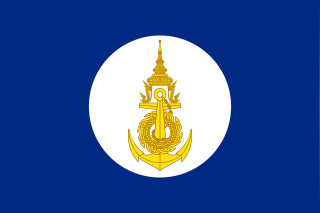
The Royal Thai Navy or RTN is the naval force of Thailand and part of the Royal Thai Armed Forces. It was established in the late-19th century. Similar to the organisational structure of the United States, the Royal Thai Navy includes the naval fleet and the Royal Thai Marine Corps. The Royal Thai Navy operates out of Sattahip Naval Base in Sattahip Bay. Thailand is the only Southeast Asian country that operates an aircraft carrier, though it is used as a pure helicopter carrier with the retirement of its Harrier fighter wing. Thailand was the second Asian nation to acquire submarines, following Japan, but has had no submarines since 1950.

The Fine Arts Department is a government department of Thailand, under the Ministry of Culture. It is mainly tasked with overseeing the country's cultural heritage conservation.










